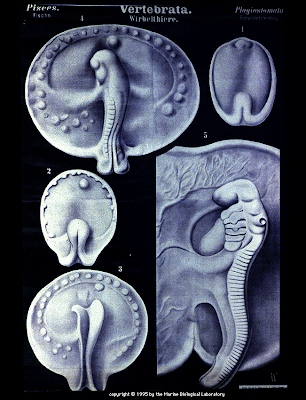





















Bernhard Siegfried Albinus (i.e. Weiss) was born in Frankfurt an der Oder on February 24, 1697, the son of the physician Bernhard Albinus (1653-1721). He studied in Leyden with such notable medical men as Herman Boerhaave, Johann Jacob Rau, and Govard Bidloo and received further training in Paris. He returned to Leyden in 1721 to teach surgery and anatomy and soon became one of the most well-known anatomists of the eighteenth century. He was especially famous for his studies of bones and muscles and his attempts at improving the accuracy of anatomical illustration. Among his publications were Historia muscolorum hominis (Leyden, 1734), Icones ossium foetus humani (Leyden, 1737), and new editions of the works of Bartholomeo Eustachio and Andreas Vesalius. Bernhard Siegfried Albinus died in Leyden on September 9, 1770.
Bernhard Siegfried Albinus is perhaps best known for his monumental Tabulae sceleti et musculorum corporis humani, which was published in Leyden in 1747, largely at his own expense. The artist and engraver with whom Albinus did nearly all of his work was Jan Wandelaar (1690-1759). In an attempt to increase the scientific accuracy of anatomical illustration, Albinus and Wandelaar devised a new technique of placing nets with square webbing at specified intervals between the artist and the anatomical specimen and copying the images using the grid patterns. Tabulae was highly criticized by such engravers as Petrus Camper, especially for the whimsical backgrounds added to many of the pieces by Wandelaar, but Albinus staunchly defended Wandelaar and his work.
Several important plates are missing from NLM's copy of the first Leyden edition of 1747, so scans were performed from the London 1749 edition instead. The plates were newly engraved for this edition by Charles Grignion (1717-1810), Jean-Baptiste Scotin (b. 1678), Ludovico-Antonio Ravenet (fl. 1751), and Louis-Pierre Boitard (fl. 1750)
More pictures Here
And there also is a book out called Albinus on Anatomy










The wax model is by the French naturalist Emile Deyrolle who sold collections of specimens for the amateur naturalist and a wide range of teaching models for primary and secondary education. He founded his shop in 1831 and moved to its current location on the Rue du Bac in Paris, the former home of Louis XIVs banker, in 1881. The shop is now owned by Le Prince Jardinier, and does a brisk trade in mounted butterflies, beetles, and other insects. It also offers taxidermy services, and for a few hundred euros you can have your dead dog or cat stuffed. The Zoology Museum has some excellent wax models of insects and other invertebrates.
More over at the university of Aberdeen in there fantastic emuseum

















